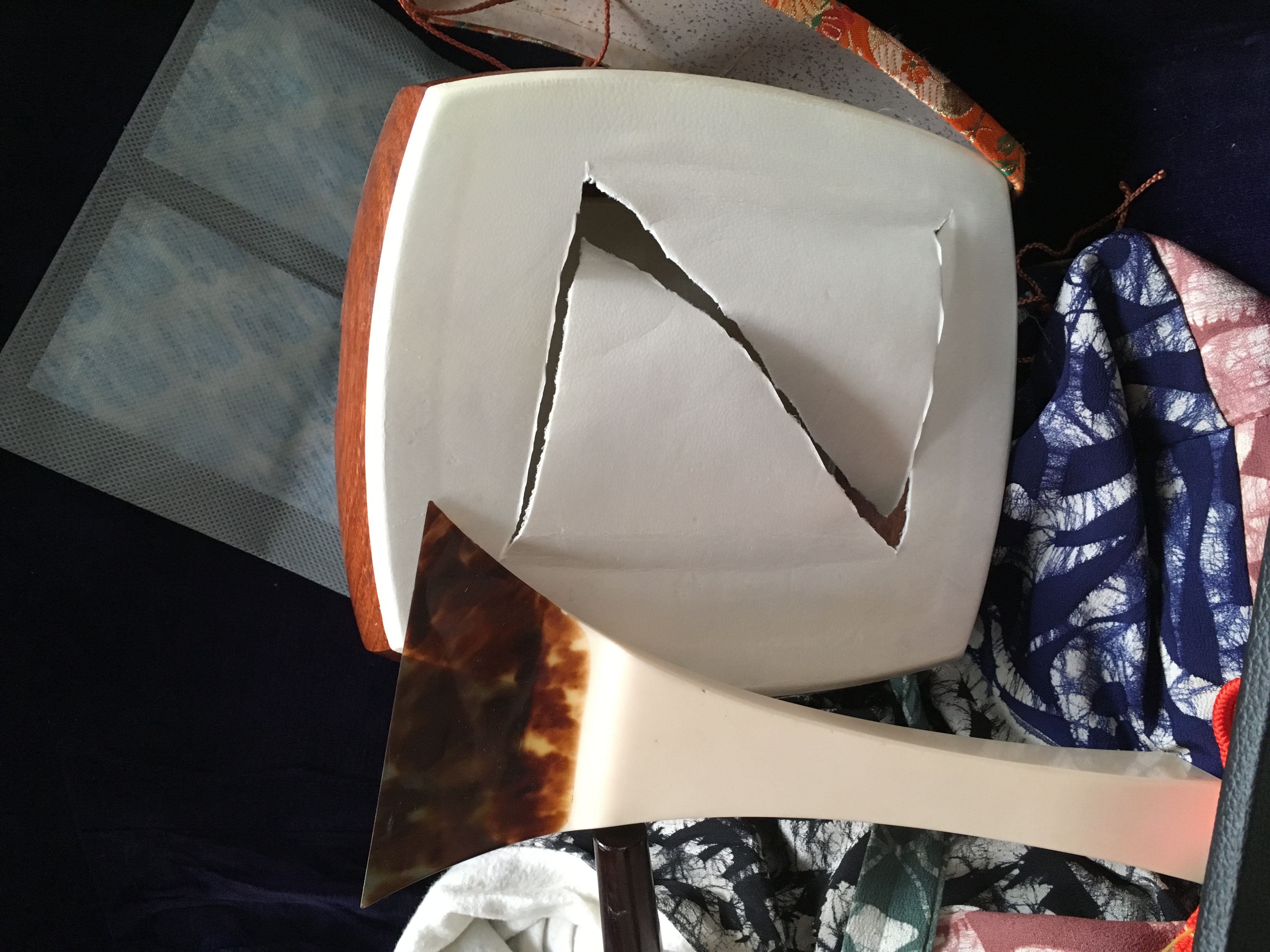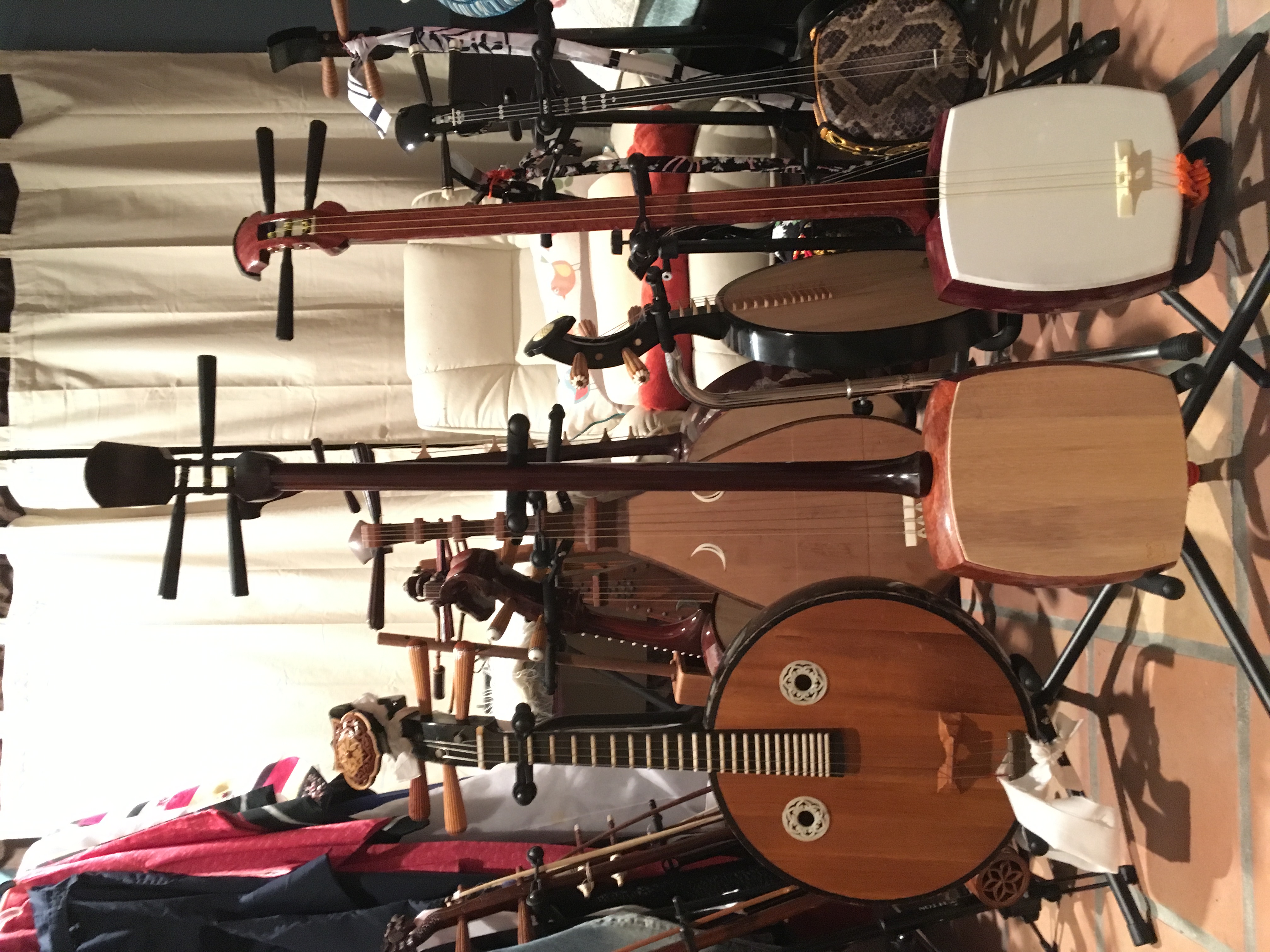[note: I did not know about Nehito Ishida and his handmade instruments before I did this project. But now, I am even more inspired!]
“ZORRO” project (replacing torn skin with gottan-like tonewood)
I got Zorro because it had a faux bekko bachi- used and chipped, but luckily could be worked on. The jiuta shamisen arrived damaged during shipping with a broken neck and tail. It ended up a great deal for me because refunded, Zorro cost me $0. The nakago repair would be easy. The sao break, I had to look at more closely and work on: it looked like resins in wood channels in the wood chip (or old glue), and both tenon fittings looked off by a little and probably would be after gluing. I had to file down a little for better fit; and also smooth the outside edge so the left hand could slide without bumps. There was a little chip on the top face of the sao where you finger, which I filled with beeswax, then would be topcoated. Light sanding then finished with gloss lacquer spray.
Now, I don’t know why the back skin was cut with a big “Z”. Maybe the nakago had broken inside the dou and it was how they were able to remove it. Unhappy with my outcome of Tyvek strips using the adhesive part (to seal mailing envelopes), and not wanting to spend forever stitching with artificial sinew, I removed the back skin completely using small amounts of water as I worked. Another opportunity to play with old glutinous rice. I cleaned off the old rice paste using water and a pot scrubber, taking care not to get the front skin wet (which is in good playable condition). Then I thought, why not a gottan-like, cigar box acoustic wood cover temporarily? I found some Japanese boxes that held textiles, (voice) sang into them, and used the one I felt was the better tonewood. I used a hand/jeweler’s saw, which needed some patience (really itched to use my power jig saw). I used hide glue because it is water-soluble, with the idea that this wood cover is temporary. It isn’t precise, so better technique would make it look nicer (like a perfect box). I can touch it up later or leave until re-skinned. The wood is left natural, but it could always be fancier with stain or even design painted.
The best part of Zorro is the faux bekko bachi. I can now touch and see it-- what makes this different from oak wood and plastic bachi. What little I know, I do like the faux bekko! And with this new experience, I can now experiment with bachi. (That’s a future post.)
All Zorro photos:
Btw if you are thinking of painting a soundboard, here are neat examples on fretted Chinese moon lutes/”liuqin” by a Taiwanese musician, who has collaborated with tsugaru shamisen players (those are fun to watch too).





